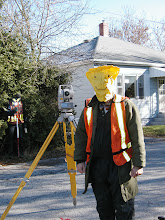Has it really been 6 months?
Egads!
Time flies when your having fun...working on a classic travel trailer, fixing cars, having Grandchildren, working overtime, etc.
O.K. Some of those excuses were lame, but all true.
This one is for the gear-heads among you...and the people who love them.
If any of you have worked on a vehicle built since 1970, you know that some of the jobs that were simple in the past have become much more complicated.
Changing the fuel pump on a 1960's era 292 CID GMC motor took 2 wrenches and 10 minutes...changing the fuel pump on most newer vehicles involves removing the fuel tank.
Changing a fuel filter was 2 hose clamps... now it may be in the tank.
Changing the air filter on an old car involved removing a wing nut.
I changed an air filter last week.
The instructions (if I had some) would have read, "Un-clip 2 clips on Air Box, loosen air plenum clamps, remove lower hose, remove air box housing, replace filter. Re-install in reverse." They would not likely have pointed out that you have to disconnect or remove 3 sensors, loosen throttle cable assembly, and skin at least one knuckle getting the breather hose out.
Sure there are how to books, with written instructions, diagrams and photo's of smiley people doing work on their own vehicles with clean hands and no effort.
...and they are all wrong.
I have used those books in the past, and used the internet in the present, and almost all of the resources I have found leave out some important steps.
Last week, I started a tune up on Geri R. Buick, our 2004 Rendezvous. At 230,000 km she still had the factory plugs and wires. I say started because like with most front wheel drive V6's, the front three spark plugs and wires are easy to get to. When it came time to get at the back three, I relied on past experience to get me through.
I tried from the top first. I could touch one wire. There was nothing I could easily remove to get at anything else.
I tried from the bottom next. Same result, same wire.
I put everything away and decided to do some research and get it done this weekend. (It was cold out)
So I consulted the internet. "It's easy", they all said...
- Remove air intake hose (and the 3 sensors, skinning at least one knuckle. See above)
- Remove upper torque link bolts
- Chock wheels
- Shift into neutral
- Use a ratchet strap to roll engine forward
- Taa Daa, Bippity-Boppity-Boo and Bobs' your Uncle! You can change the plugs and wires! They will practically fall out!
- Ha! We fooled you!
- Remove upper radiator hose
- Spill coolant on everything nearby
- Perform steps 1 thru 5 above
- Attempt to get your hands around, over, or beside distributor assembly
- Number all 6 plug wires before removing distributor assembly
- Unplug 4 control plugs to distributor assembly
- Disconnect alternator to give yourself enough room to get at rear mounting bracket nuts
- Remove distributor assembly nuts and bolts using 2 different size wrenches
- Consider removing wiper drive arms to get distributor assembly out
- Wiggle and twist distributor assembly until it breaks free of the 2 inch long studs on the rear
- You may now access the rear spark plugs and wires, Mortal.
Here are some more of what I call, "Unwritten Instructions."
1990's Windstar # 1,3 & 5 Spark Plug Removal:
- Remove radio antenna (I kid you not)
- Remove wiper blades
- Remove cowl cover
- Remove heater duct
- Remove spark plug wires and plugs
- Remove passenger side front wheel
- Reach though steering opening to remove starter bolts
- Remove heater blower.
- Pull starter out and up through top (The starter is on the other side of the car, you just can't get it out that side)
- Remove Auxiliary Fuse Panel
- Remove Battery
- Remove Battery Box (rear starter mounting bolts are under the battery)
- Remove engine (it's easier than pulling the trans-axle)
- Can't be done
I hope these tips help you in your quest to perform simple (!) auto maintenance, and if you have any tips to pass along, feel free.
DJW
To think, I once wanted to be a mechanic.

